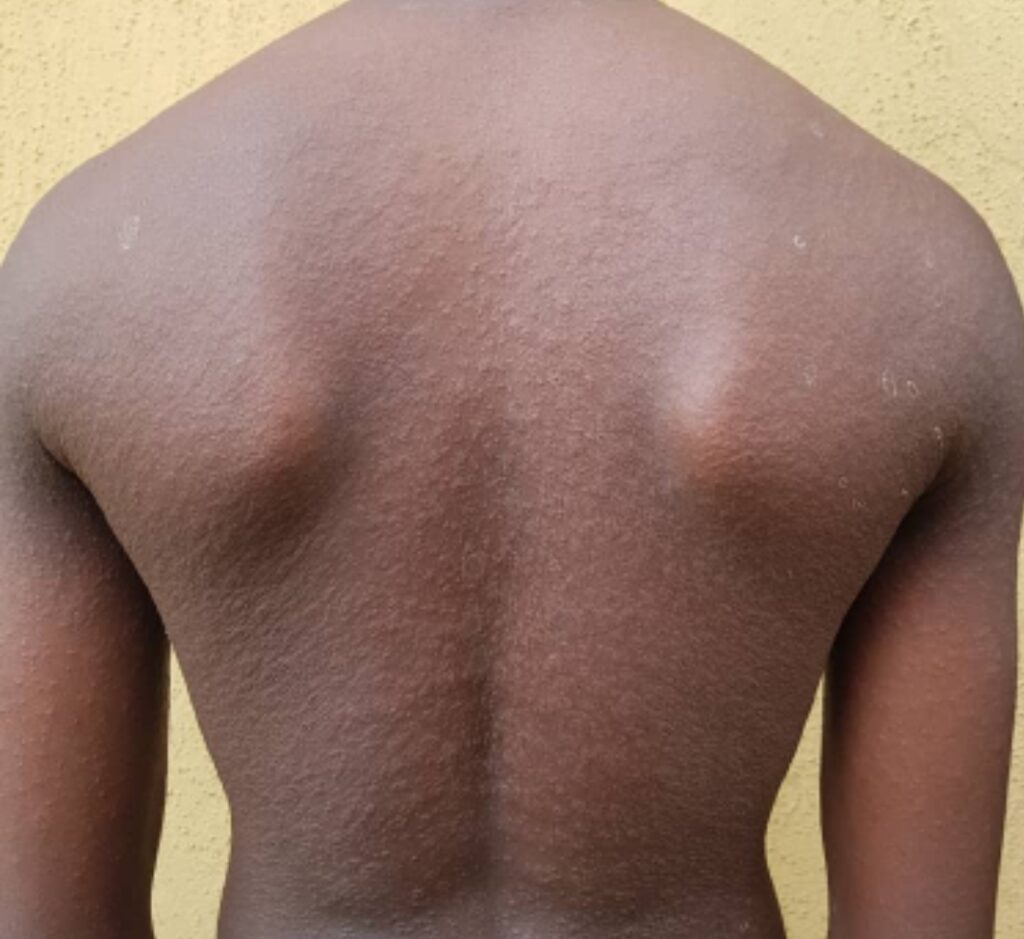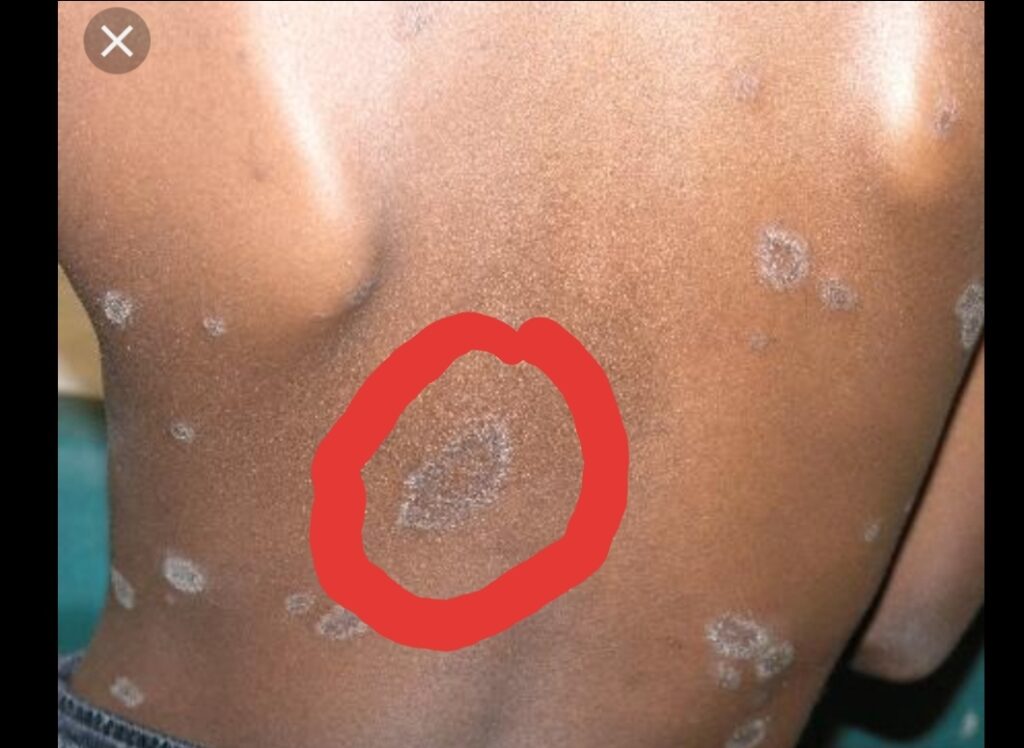Have you ever heard of the self limiting condition called Pityriasis rosea?
Pityriasis rosea is a papulosquamous disorder of unknown cause.
Several factors have been implicated in its cause. The most commonly associated factors include infections especially viral, immune suppression and a seasonal variation.
Abroad, it is commonly seen in spring period. In Nigeria, it has been reported more often during the beginning of the rainy season and towards the end. There are seasonal variations from the reports in Nigeria as some have even reported cases in the dry season. The strongest association has been with the viral infection. It is not uncommon to get reports of upper respiratory tract infection weeks prior to the condition.
In up to 80% of cases, there may be an initial patch called ‘the herald patch’. This patch usually remains the largest of all the lesions, is the first to fade away and appears before other lesions. The time interval before other lesions appear may be between 3 days to 3 weeks.
Pityriasis rosea (PR) may be slightly itchy especially in tropical areas like ours. The appearance is what gives most patients distress. Most medical students and doctors will remember the ‘Christmas tree’ description on the trunk because of its centrifugal appearanceIt is important to note that it doesn’t always follow the Christmas tree pattern. It may even appear more on the limbs rather than on the trunk. The appearance is in form of annular (circular) patches of various sizes which may be slightly raised and appear a little red and scalyThree things to note about PR
1) It is self limiting. The most you need is a shampoo with some antiinflammatory effect and moisturizing the skin. Antihistamines may also be needed if there’s itching.
2) Antibiotics may make it worse. That is what happens in most cases when antibiotics are given and it becomes more florid
3) Recurrences are very unusual and uncommon.
If you have the type of patient that must swallow something to feel they have been treated appropriately…give them multivitamins.
Resolves in most cases in 6 weeks.
Reassure the patient
Discuss the condition with them and tell them to read up more about it on patient friendly sites.

This particular picture is from a colleague who had PR. Permission obtained before using this picture. Another case of PR.
Can you see the scaling?
Both pictures have the Christmas tree pattern. But the redness is more appreciable in the first picture.
This is also a picture of my cousin who had PR.
If you don’t learn anything about PR…always remember that it is self limiting.

In this last picture from Google images, the circled one is the herald patch I talked about. Can you see it appearing larger than the others? Can you see it looking less scaly than the others…almost like its fading out?

Now….you know a little (or a lot) about pityriasis rosea


